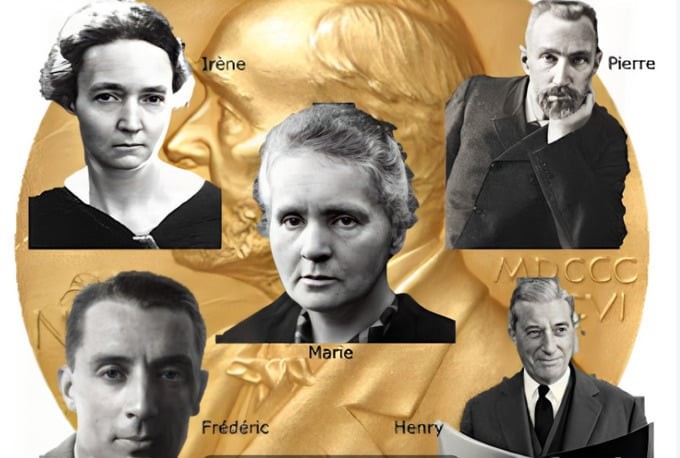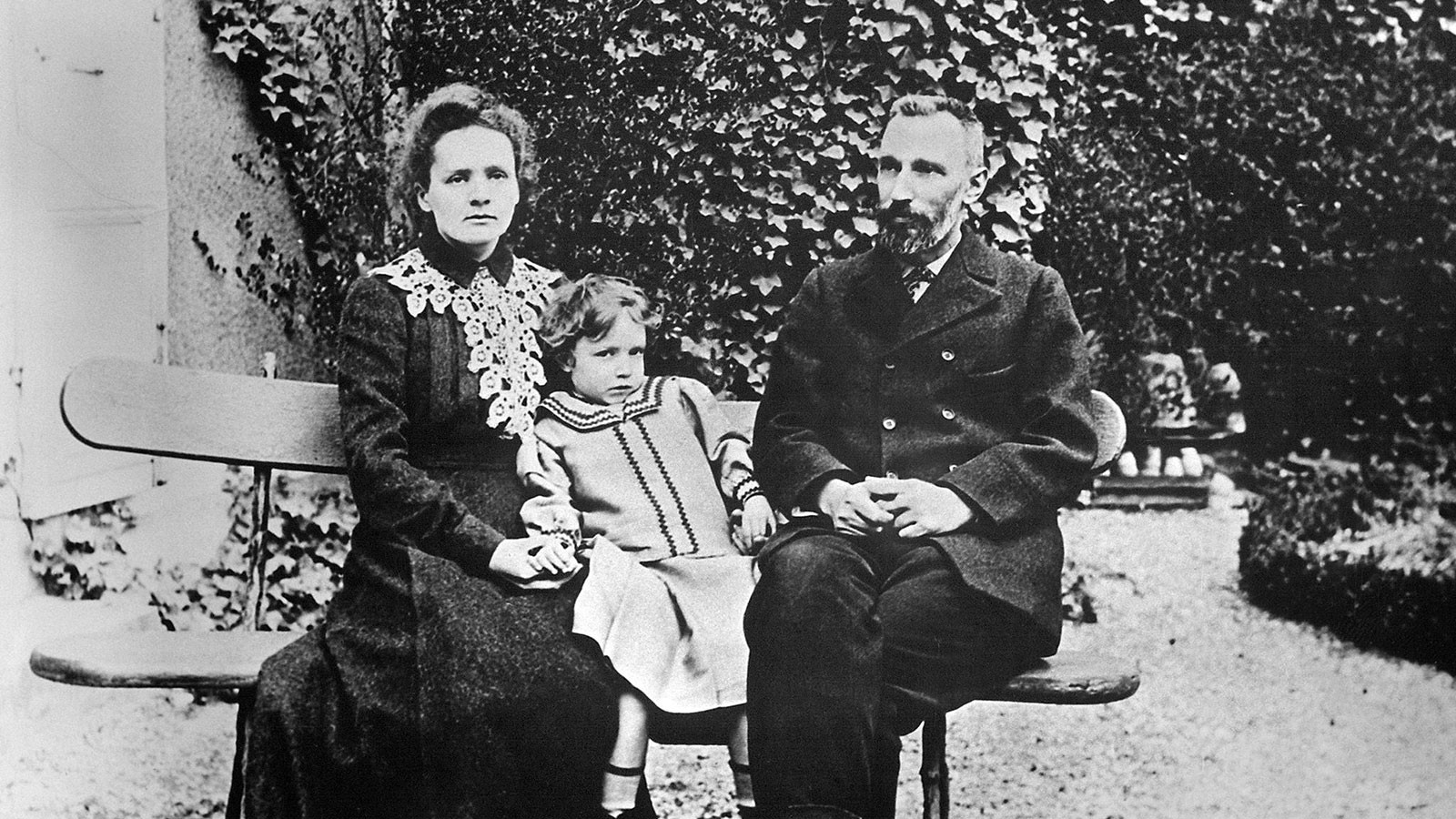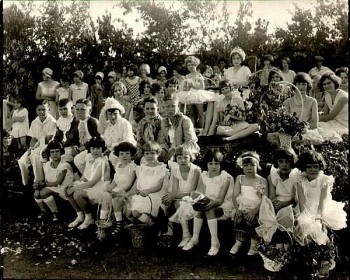Weirdest Family with 5 Nobel Prizes
| Table of Contents |
Marie Curie is known as the first female scientist in the world to win a Nobel Prize. At the same time, she is also the first scientist in the world to win 2 Nobel Prizes in 2 different fields.
However, Marie Curie was not the only member of her family whose significant contributions to science and society were recognized by the Swedish Academy. The Curie family won a total of 5 Nobel Prizes.
Four Nobel Prize winners in science from the same family is an uncommon distinction. The Curies family, whose lives and contributions play a major role in the 20th-century history of nuclear physics, was the recipient of those honors.
The Curie family stands as a monumental example of scientific excellence, with a remarkable record of receiving five Nobel Prizes across multiple generations. This family's contributions to science are not only groundbreaking but have also been a source of inspiration for scientists around the world. Here, we delve into the achievements and impact of the Curies, exploring the individuals behind these prestigious awards and their enduring legacy in the scientific community.
 |
| Fascinating Facts About the Unique Family with 5 Nobel Prizes |
Marie Curie: The Matriarch of Modern Physics and Chemistry
Marie Curie, originally Maria Sklodowska, was the first woman to win a Nobel Prize and remains the only person to have won Nobel Prizes in two different scientific fields. Her first Nobel Prize in Physics (1903) was shared with her husband Pierre Curie and Henri Becquerel for their work on radioactivity. In 1911, she was awarded a second Nobel Prize, this time in Chemistry, for her discovery of the elements polonium and radium, further solidifying her monumental impact on science.
The French physicist, who was born in Poland, was well-known for her studies on radioactivity, but she accomplished a great deal throughout her life. As early as age four, Marie demonstrated remarkable abilities, making her a child prodigy. Four-year-old Marie learned to read both French and Russian on her own after being raised by two educators who emphasized the importance of education.
Marie's memory, which enabled her to recollect vivid events from her toddler years, was equally impressive.
The young scientist used her French skills to her advantage when she traveled to Paris in 1891 to continue her studies at Sorbonne University, where she focused on chemistry, math, and physics. There, she found polonium and radium, two radioactive elements. She soon met Pierre Curie, her spouse and scientific collaborator.
At the age of sixty-six, Marie Curie passed away at the Sancellemoz Sanatorium in Passy, France on July 4, 1934. Her condition, aplastic pernicious anemia, which she developed after years of radiation exposure from her job, was listed as the cause of her death.
Irene, born in 1898, and Eve, born in 1904, are her two surviving daughters.
Like her mother, Irene went into science and worked on the atomic nucleus with her husband Frederic Joliot. The two of them were recognized for their work on the discovery of artificial radiation and were awarded the Nobel Prize. In 1956, leukemia—a disease linked to radiation exposure—also claimed Irene's life. In March 2015, Hélène Langevin-Joliot, Irene's daughter and Marie Curie's granddaughter, paid a visit to our Hampstead hospice. Hélène is also a well-known nuclear physicist.
Eve turned to writing and journalism. Dr. Hélène Langevin-Joliot, Irene's 1927-born daughter, went on to work in nuclear physics and eventually rose to the position of research emeritus at the National Centre for Scientific Research in Paris.
Pierre Curie: A Pioneer in Radioactivity
Pierre Curie, Marie's husband, was co-awarded the 1903 Nobel Prize in Physics. His contributions were crucial in the discovery of piezoelectric effects and in supporting Marie’s research on radioactivity. Tragically, his untimely death in 1906 cut short a brilliant scientific career.
Together with his brother Jacques, Pierre Curie made significant contributions to the fields of magnetism and crystallography as well as the discovery of piezoelectricity. Pierre married Maria Salomea Sklodowska the following year after they first met in 1894. The chemical elements radium and polonium were discovered in 1898, according to Pierre and Marie Curie. The discovery of radioactivity by the Curies and Henri Becquerel shared the 1903 Physics Nobel Prize. Following Pierre's passing, Marie continued her research and was recognized for her achievement in isolating pure radium with the 1911 Nobel Prize in Chemistry.
Irène Joliot-Curie and Frédéric Joliot-Curie: Continuing the Family Tradition
Marie Curie's eldest daughter, Irène Joliot-Curie, also followed in the family tradition and became a prominent scientist. Irène Joliot-Curie was born in 1897 in Paris. In 1918, after graduating from high school, she joined the Radium Research Institute to assist her mother in nuclear fission research. It was during this time that she met her husband, Frédéric Joliot - a graduate student at Collège de France.
In 1935, Irène Joliot-Curie and Frédéric Joliot-Curie were awarded the Nobel Prize in Chemistry for their work synthesizing new radioactive elements. Their discovery paved the way for the development of nuclear energy and led to important advances in medicine, including the use of radioactive isotopes in the diagnosis and treatment of disease.
The Curie daughter and her husband also worked on the French atomic bomb project since 1939 and received a patent for this work. This was the most advanced atomic bomb project before World War II until the Americans with the Manhattan Project took this position.
Irène Joliot-Curie and Frédéric Joliot-Curie were a formidable couple in the world of science, following in the footsteps of Irène's illustrious parents, Marie and Pierre Curie. Their contributions to chemistry and physics not only continued the Curie family legacy but also led to significant discoveries that have had lasting impacts on science and medicine.
Ève Curie: A Life Devoted to Literature and Humanitarianism
While the Curie family is predominantly known for their groundbreaking achievements in science, Ève Curie, the youngest daughter of Marie and Pierre Curie, carved a unique and impactful path in literature and humanitarian efforts. Born in Paris in 1904, Ève Curie Labouisse diverged from the scientific pursuits of her family, channeling her talents into writing, music, and public service.
Ève Curie married Henry Richardson Labouisse, Jr., a diplomat who later became the executive director of UNICEF. The couple’s commitment to humanitarian causes was profound, with Labouisse accepting the Nobel Peace Prize in 1965 on behalf of UNICEF during his tenure. Ève Curie's support and partnership in these endeavors were crucial.
Ève Curie Labouisse’s life and work reflect a profound dedication to the betterment of humanity, driven by a powerful sense of duty that was perhaps inspired by her mother's legacy, albeit manifested through different means. Her contributions to literature and humanitarian efforts ensure that her legacy, distinct yet complementary to that of her family’s scientific accomplishments, continues to inspire and impact the world.
The Impact of the Curie Family
 |
| Curie Family |
The legacy of the Curie family extends beyond their Nobel Prizes. Their work significantly advanced our understanding of radioactivity and nuclear physics. The tools and methods they developed have applications in a variety of fields, including medical treatments and nuclear energy. Furthermore, the Curie family's dedication to science-inspired future generations of researchers, particularly encouraging the participation of women in the sciences.
Legacy and Recognition
Today, the Curie family is celebrated not only for their scientific achievements but also for their commitment to research and education. Institutions such as the Curie Institute in Paris, founded by Marie Curie, continue to be at the forefront of scientific research and education.
The Curie family's story is one of intellectual bravery, immense curiosity, and relentless pursuit of knowledge. They remain symbols of excellence in scientific research, their discoveries pivotal to the advancements in both their time and ours. Their story is a powerful reminder of the impact one family can have on the world through science.
5 Fun Facts About Marie Curie
1. Marie Curie's Findings: Humble Settings
You can only imagine how legitimate a physicist who has won a Nobel Prize would have in their workspace. Though she may have broken down barriers in science, Marie Curie's lab was anything but glamorous.
Marie and her spouse required a large amount of space to carry out their experiments in order to establish the existence of the elements polonium and radium; a conventional laboratory was not suitable. It turns out that a large portion of Team Curie's Nobel Prize-winning research was conducted out of an old shed.
2. She was an exceptionally talented student
Under the name "Marie," Curie enrolled at the Sorbonne in Paris in an attempt to sound more French. As the best student in her class, she received the Alexandrovitch Scholarship, which supports Polish students studying overseas. In 1894, this assisted her in paying for her degrees in mathematical sciences and physics.
She is said to have frequently neglected to eat despite working incredibly hard, frequently well into the night. When she did, she only ate tea, bread, and butter.
3. Marie Curie and Albert Einstein’s Relationship
A fun fact about Marie Curie that nobody would have guessed included Albert Einstein. A terrible car accident claimed Pierre's life in 1906. After becoming well-known as the only female scientist, Marie had to deal with the harsh sexism that came with being a grieving widow.
Einstein made the decision to encourage Marie at that point by writing her a heartfelt letter. Not only was her determination and intelligence admirable, the note also stated that Einstein fully endorsed her. The founder of modern physics, Marie Curie, said of this extraordinary woman, "Marie Curie is, of all celebrated beings, the only one whom fame has not corrupted."
4. Curie was the first person to win two Nobel Prizes
In 1903, Curie received her first Nobel Prize in physics, which she shared with physicist Henri Becquerel and her husband Pierre. Curie was the first person to receive a second Nobel Prize after being the first woman to be awarded one. She was given her second prestigious award in 1911, this time in the field of chemistry, for the isolation of radium.
5. Curie is buried in the Panthéon in Paris
Curie and her husband's remains were interred in the Panthéon in Paris in 1995; the Panthéon is a mausoleum for notable French intellectuals. She was the first woman to earn this honor through her own accomplishments and the second woman overall to receive it.
Among her writing, Curie left behind this thought: "Nothing in life is to be feared, it is only to be understood. Now is the time to understand more, so that we may fear less."
Famous Films about Marie CurieRadioactive – 2020In the most recent movie about the physicist, Radioactive, British actress Rosamund Pike plays Marie Curie. It centers on her scientific career and the relationships she had with people throughout her life, including her marriage to Pierre Curie. Marie Curie: The Courage of Knowledge – 2016Marie Curie was born in Poland, but she lived in France for the majority of her life. She has thus been portrayed multiple times in French films. The 2016 Toronto International Film Festival featured a French-language film, Marie Curie: The Courage of Knowledge, in the Contemporary World Cinema section. Marie Curie: More Than Meets the Eye – 1997Kate Trotter plays Marie Curie in this 1997 television movie. In Marie Curie: More Than Meets the Eye, two young girls witness a woman entering high-security buildings during World War I. Later on, they discover that the renowned physicist is the object of their curiosity. Madame Curie – 1943The fact that this biographical movie came out barely ten years after Marie Curie passed away is evidence of how her contributions are still valued today. The story of Madame Curie, which centers on how her mother and father met while working together, was taken from the biography of Æve Curie, the daughter of Marie Curie. |
 Facts About The World's Most Fertile Woman With 69 Children Facts About The World's Most Fertile Woman With 69 Children Throughout history, there have been incredible accounts of mothers giving birth to extraordinarily large numbers of children. Valentina Vassilyeva, a peasant from 18th-century Russia, is ... |
 Facts about Argos - The Oldest City in Europe Facts about Argos - The Oldest City in Europe Europe has many old cities that are still inhabited today. Every year, a large number of tourists visit these stunning historic sites. |
 Interesting Facts: School Uniforms in the U.S In Controversy, Pros and Cons Interesting Facts: School Uniforms in the U.S In Controversy, Pros and Cons The majority of American schools have implemented dress codes that specify what students are and are not permitted to wear to class, in place of ... |
 Can People Fly in the Air - Facts About Levitation Technology Can People Fly in the Air - Facts About Levitation Technology The levitation technology defies the fundamental principles of gravity. Join Knowinsiders.com to explore and uncover the secrets of martial arts and the fascinating truths that ... |























